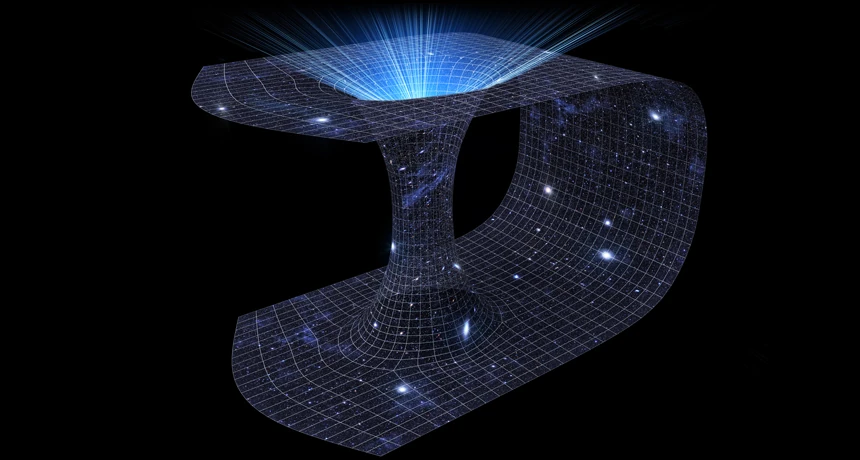Astrophysicists from the International School for Advanced Studies (SISSA) in Trieste, Italy, speculated in a 2015 study that wormholes, predicted by Einstein in his theory of General Relativity as areas where space and time are bent to manipulate the distance, are possible, and could be hiding within dark matter inside the Milky Way.
But, It would take a huge
mass to produce the manipulation of spacetime, and no evidence of their
existence has ever been found. Based on their theory, our galaxy could be a huge wormhole (or
space-time tunnel) and, if that were true, it would be "stable and
navigable."
"If we combine the map
of the dark matter in the Milky Way with the most recent Big Bang model to
explain the universe and we hypothesize the existence of space-time tunnels,
what we get is that our galaxy could really contain one of these tunnels, and
that the tunnel could even be the size of the galaxy itself. But there's
more," explains Paolo Salucci, astrophysicist with SISSA and a dark matter
expert. "We could even travel through this tunnel, since, based on our
calculations, it could be navigable.
Salucci is among the authors
of the paper published in Annals of Physics. Although space-time tunnels (or
wormholes or Einstein-Rosen bridges) have only recently gained great popularity
among the public thanks to Christopher Nolan's sci-fi film, they have been the
focus of astrophysicists' attention for many years.
"Obviously we're not
claiming that our galaxy is definitely a wormhole, but simply that, according
to theoretical models, this hypothesis is a possibility." Can it ever be tested
experimentally? "In principle, we could test it by comparing two galaxies
-- our galaxy and another, very close one like, for example, the Magellanic
Cloud, but we are still very far from any actual possibility of making such a
comparison."
To reach their conclusions
the astrophysicists combined the equations of general relativity with an
extremely detailed map of the distribution of dark matter in the Milky Way:
"the map was one we obtained in a study we carried out in 2013,"
explains Salucci. "Beyond the sci-fi hypothesis, our research is
interesting because it proposes a more complex reflection on dark matter."
As Salucci points out,
scientists have long tried to explain dark matter by hypothesizing the
existence of a particular particle, the neutralino, which, however, has never
been identified at CERN or observed in the universe. But alternative theories
also exist that don't rely on the particle, "and perhaps it's time for
scientists to take this issue 'seriously'," concludes Salucci. "Dark
matter may be 'another dimension', perhaps even a major galactic transport
system. In any case, we really need to start asking ourselves what it is."
"Our result is very
important because it confirms the possible existence of wormholes. But there's
more. We could even travel through this tunnel, since, based on our
calculations, it could be navigable. Just like the one we've all seen in the
film ‘Interstellar'."
Scientists had believed any
wormholes which exist in the universe could simply be the size of a pin prick.
However, the team of astrophysicists say the one in our galaxy could be big
enough to fit a spaceship which could traverse the cosmos, as they would likely
exist in other spiral galaxies.
"Obviously we're not
claiming that our galaxy is definitely a wormhole, but simply that, according
to theoretical models, this hypothesis is a possibility,” Salucci observed.
Via Dailygalaxy

